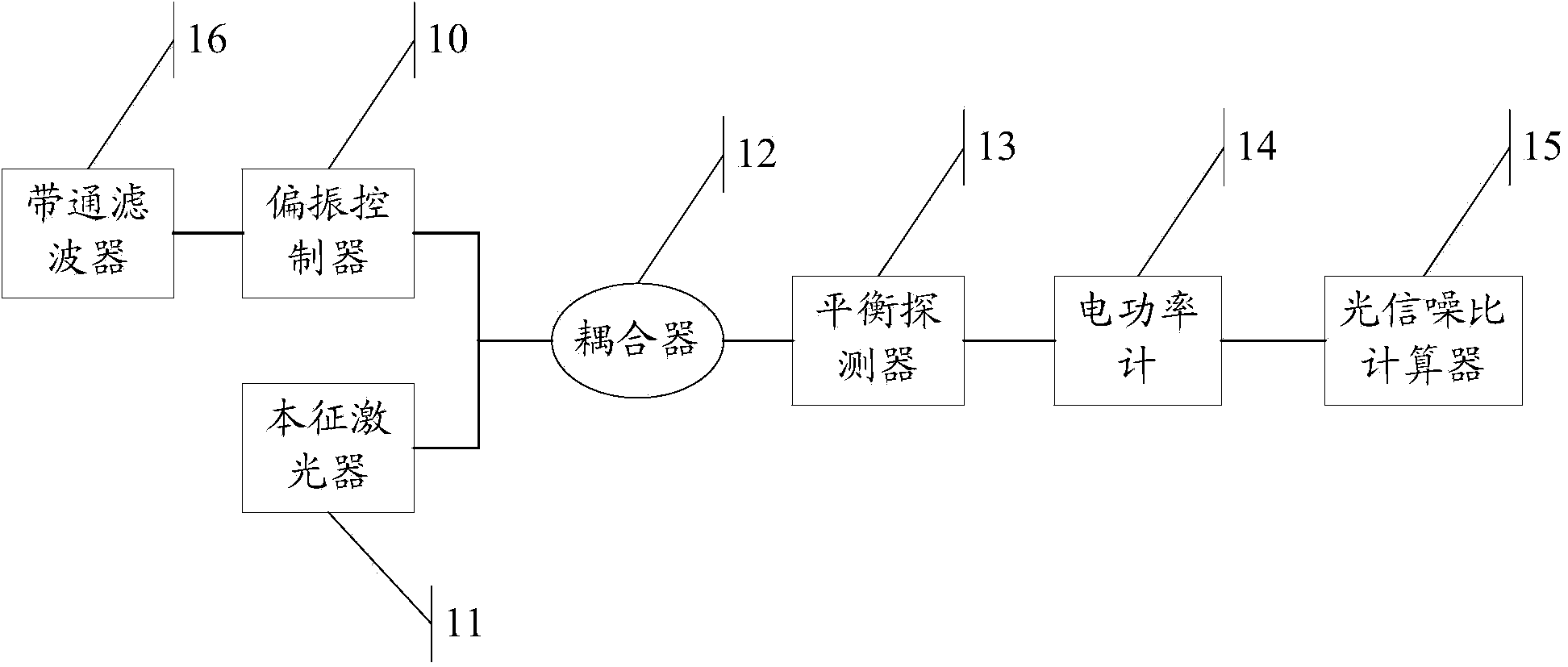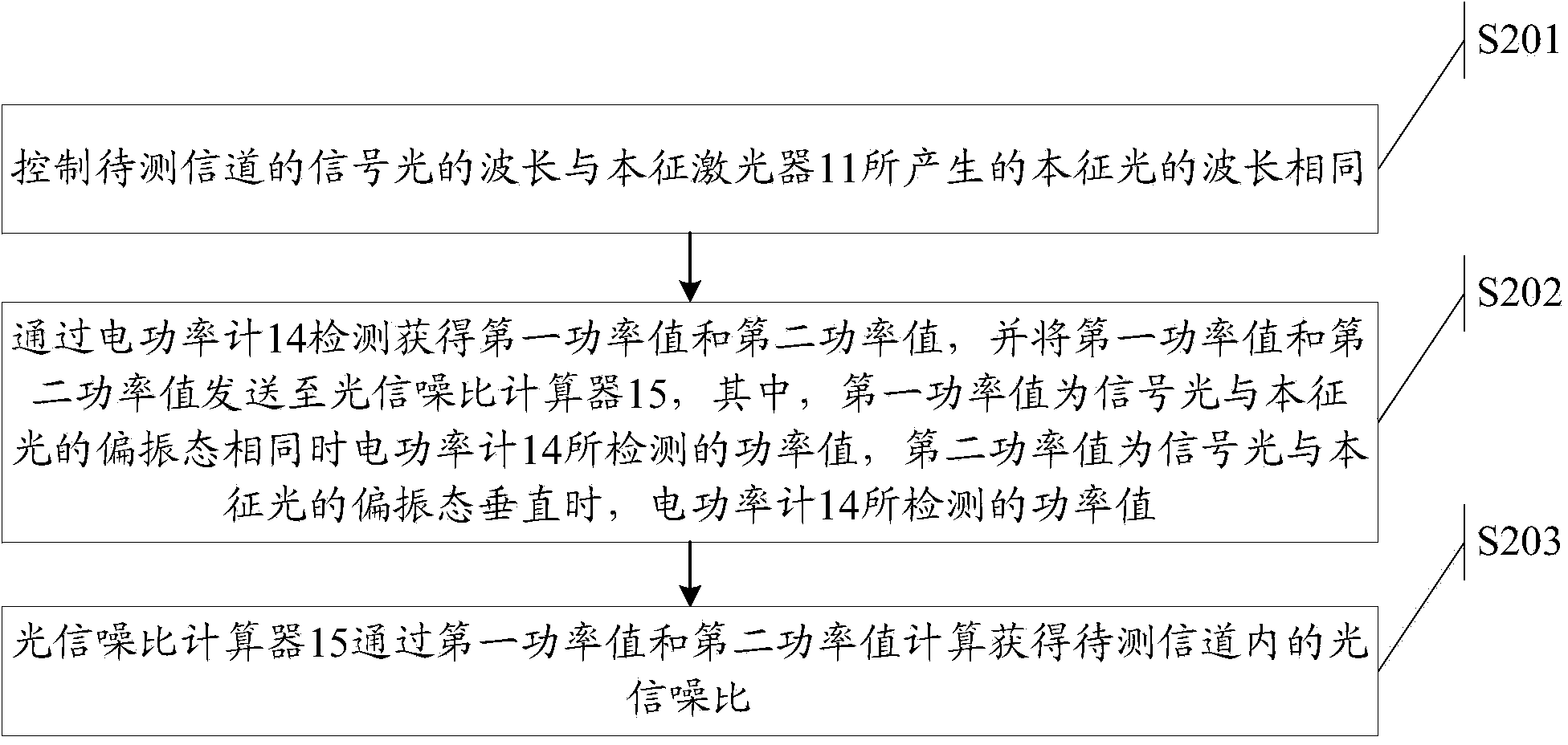Coherent mixing based in-band optical signal to noise ratio monitoring method and calculation system
A technology of optical signal-to-noise ratio and frequency mixing, applied in the field of communication, can solve problems such as high cost and inaccuracy
- Summary
- Abstract
- Description
- Claims
- Application Information
AI Technical Summary
Problems solved by technology
Method used
Image
Examples
Embodiment 1
[0143] In this embodiment, the CO-OFDM system will be used as an example to introduce the optical signal-to-noise ratio calculation system, please refer to Figure 5 , the CO-OFDM system includes the following structure:
[0144] An external cavity laser 50, used to generate an optical signal;
[0145] The IQ modulator 51 is connected to the external cavity laser 50 and is used to modulate the electrical signal into the optical domain;
[0146] ASE (amplified spontaneous emission: amplifier spontaneous emission) noise source 52, used to generate ASE noise;
[0147] An attenuator 53, connected to the ASE noise source 52, for adjusting the size of the ASE noise;
[0148] 50:50 coupler 54, connected to IQ modulator 51 and attenuator 53;
[0149] The 10:90 coupler 55 is connected to the 50:50 coupler 54, wherein the 50:50 coupler 54 and the 10:90 coupler 55 are used to couple the ASE noise with the optical signal, so that the OSNR can be changed;
[0150] The tunable bandpass ...
Embodiment 2
[0158] In this embodiment, the calculation results for the CO-OFDM system will be introduced. The system transmits 16QAM signals of 40Gb / s. The obtained OSNR monitoring results are as follows Figure 6 shown, where Figure 6 The vertical axis of represents the calculated value of OSNR determined by the formula [3], Figure 6 The horizontal axis of represents the standard value of OSNR measured by spectrometer 57, from Figure 6 It can be seen that the calculated value of OSNR is not much different from the standard value, which shows that the accuracy is high.
[0159] Also, please refer to Figure 7 , Figure 7 The ordinate represents the error of the calculated value of OSNR relative to the standard value, and the abscissa represents the standard value of OSNR, by Figure 7It can be seen that when the OSNR changes within the range of 10-25dB, the error of the calculated value is within 0.5dB.
[0160] One or more embodiments of the present invention have at least the fo...
PUM
 Login to View More
Login to View More Abstract
Description
Claims
Application Information
 Login to View More
Login to View More - R&D
- Intellectual Property
- Life Sciences
- Materials
- Tech Scout
- Unparalleled Data Quality
- Higher Quality Content
- 60% Fewer Hallucinations
Browse by: Latest US Patents, China's latest patents, Technical Efficacy Thesaurus, Application Domain, Technology Topic, Popular Technical Reports.
© 2025 PatSnap. All rights reserved.Legal|Privacy policy|Modern Slavery Act Transparency Statement|Sitemap|About US| Contact US: help@patsnap.com



